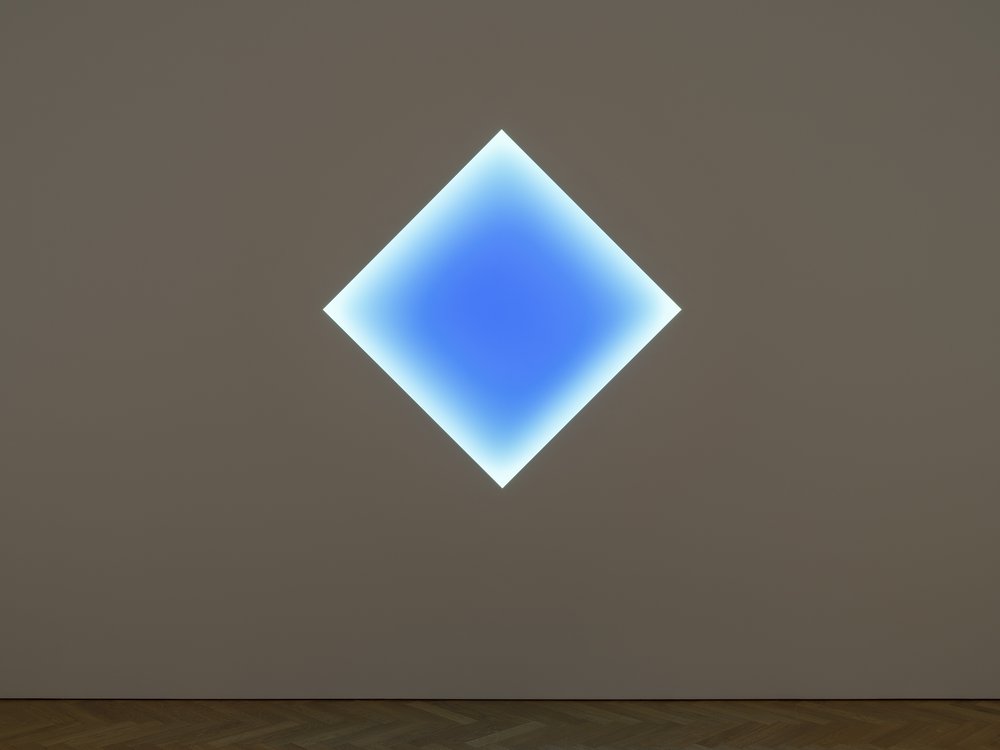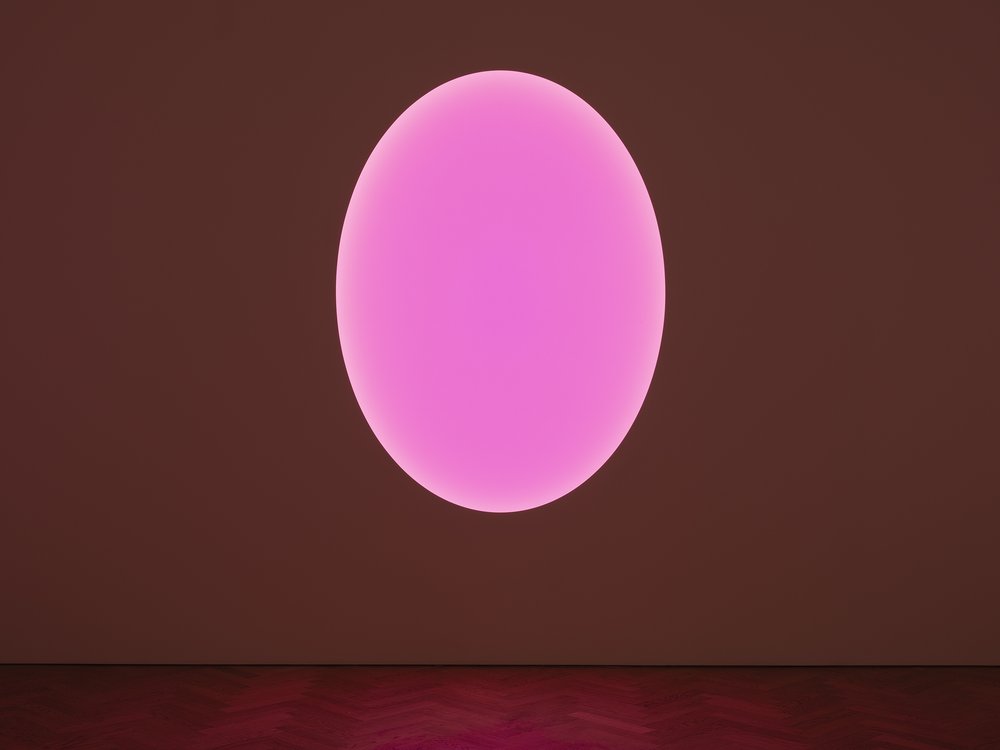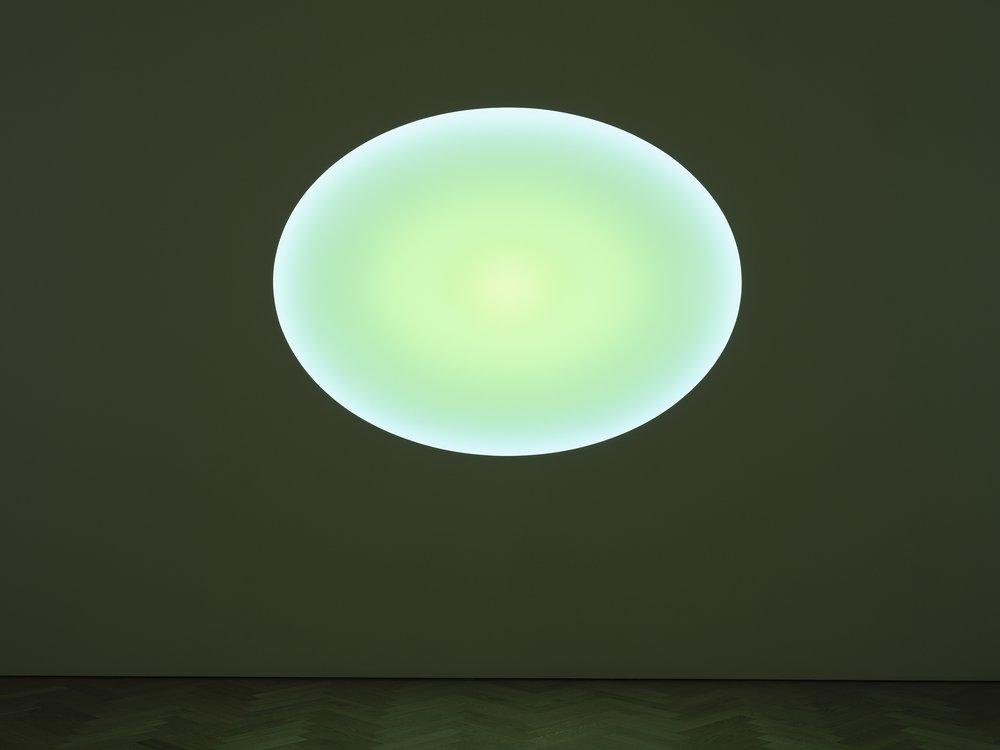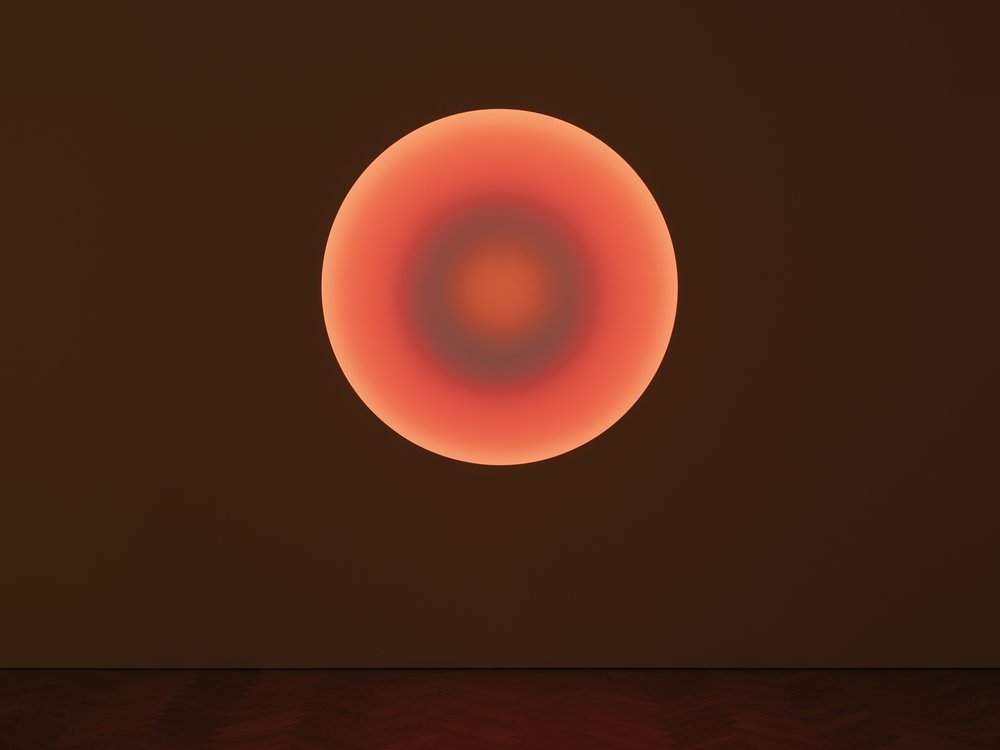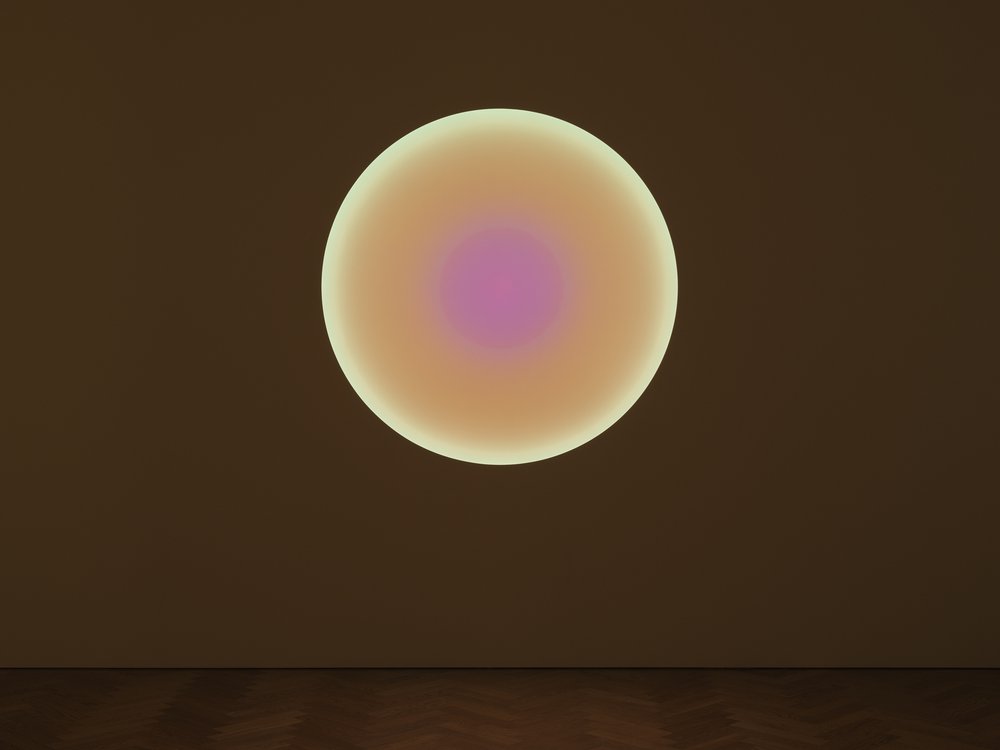ART-PRESENTATION: James Turrell
 Following the precautions against the spread of COVID-19 globally and in order to enable and maintain the engagement with art that is so crucial in these challenging times many Institutions, Museums and Galleries created viewing rooms, among them Pace Gallery is presenting a series of online exhibitions on its viewing room platform.
Following the precautions against the spread of COVID-19 globally and in order to enable and maintain the engagement with art that is so crucial in these challenging times many Institutions, Museums and Galleries created viewing rooms, among them Pace Gallery is presenting a series of online exhibitions on its viewing room platform.
By Efi Michalarou
Photo: Pace Gallery Archive
James Turrell’s exhibition at Pace Viewing Room features four new works from the “Constellation” series staged in site-designed chambers. The works feature elliptical and circular shapes with a frosted and curved glass surface animated by an array of technically advanced LED lights, which are mounted to a wall and generated by a computer program. The light changes are subtle and hypnotic, one colour morphing into the next. The program runs on a loop that is imperceptible to the viewer, prompting a transcendental experience. James Turrell was born into a Quaker family in Los Angeles in 1943, he got his pilot’s license at 16 years old, following in the footsteps of his late father, who had been an aeronautical engineer. Because of his Quaker background, he was not a good candidate for service in the Vietnam War, but while still in his teens he was sent for alternative service to Laos. Flying in secret missions over Tibet and the Himalayas exposed him to changes in vision at high altitude. This attuned him to extraordinary meteorological phenomena. According to Turrell, his career as an artist began with a visual misperception. As a psychology major at Pomona College in 1965, he enjoyed art history, and especially the works of art by Mark Rothko he saw during his art history lectures. He was later disappointed on a trip to New York when he saw his first canvas by Rothko, which lacked the glow it appeared to have when shown via slide projector. The fact that a projected image of a Rothko might possess a glow that exceeded the original was Turrell’s initial impetus for becoming a light-based artist. Turrell went on to pursue studio art at the University of California, Irvine, and upon graduating in 1966, he rented a large space in the abandoned Santa Monica Hotel that would serve as his studio for the next eight years. In it he conducted laboratory-like explorations using the architecture, exterior light, and projectors to mold light as if it were a material substance that could be shaped. Some of his first light-based works were “Projection Pieces” – so-called because the projector beams created the hologram of a geometric shape, further adapted through structural cuts in the building itself. In this way, the changing light of the outside environment – be it a gradual turn to dusk or passing headlights – also impacted the viewer’s perception. Turrell was part of a generation accustomed to enormous advancements in technology and the excitement of the space race. In 1968 and 1969, he, along with artist Robert Irwin, worked on the Art and Technology program of the Los Angeles County Museum of Art with Ed Wortz, a scientist at a Southern California aerospace firm. Turrell was considered a member of the Light and Space Movement. Although this group was only loosely affiliated in terms of the art being produced, Turrell maintained friendships with his artist peers such as Irwin, bonding over an interest in light and technology that was largely unexplored among East Coast artists at the time. Turrell received an MFA from the Claremont Graduate School in Claremont, California in 1973.
The massive and ambitious “Roden Crater Project” has been Turrell’s main work since 1977, when, with the help of the DIA foundation, he purchased the site of an extinct volcano in northwestern Arizona near Flagstaff. For years he had searched for a large site that was isolated from the lights of civilization and raised above the surrounding land. Always an avid aviator and independent spirit, he flew six days a week for seven months between the Western foothills of the Rocky Mountains and the Pacific Coast, sleeping under the wing of his plane. Finally, he found Roden Crater. He wanted to create a site where the visitor could experience “celestial vaulting,” which Roden Crater, at approximately 5,500 above sea level and with a natural concave bowl, was well suited for. This phenomena, in which space seems to curve at the edges of your perception, was something Turrell had experienced while flying close to ground. Roden Crater is also a perfect site because nearby Flagstaff was one of the first places in the United States to create light pollution laws, enabling the visitor an undisturbed view of the heavens. Construction began in 1979, starting and stopping as funds allowed and plans became more complex. Turrell has completed multiple spaces and observatories as part of his grand plan to link visitors with the celestial movements of the planets, stars, and distant galaxies. He has contoured the crater bowl and cut a complex and precise series of chambers, tunnels, and apertures within the volcano with the aid of construction crews and dump trucks as well as astronomers. The crater bowl has been shaped to change the visitor’s perception of the horizon, seemingly bringing one closer to the sky and the experience of being inside space. The interior chambers and tunnels enhance or enable the perception of specific celestial events, such as lunar eclipses and winter and summer solstices. Turrell has a long-standing interest in the ancient art of astronomy as it might have been practiced in Babylon or Ancient Egypt, uniquely combining ancient knowledge with the study of cutting-edge science, with regard to the psychological and neurological nature of perception and astrophysics. In 1984, at age 41, Turrell was the first artist to become a MacArthur Fellow, the so-called “genius” award. He spent the award on the Roden Crater Project bought surrounding land and started a cattle ranch to fund the Crater project. His career has been further supported by the sale of drawings and plans of the crater site and by his light installations, giving him a reputation as a sculptor of light. In addition to “Projection Pieces”, “Shallow Space Constructions” and “Wedgeworks” were pioneered in the Mendota rooms and honed later in different installations in museums and galleries. From 1976 to today, Turrell has used Space Division Constructions to create the illusion of a seemingly infinite room through an aperture. Also since 1976, the artist has created “Ganzfelds” in order to create an experience of light that gets rid of all depth for the viewer so that they are engulfed in light. “Perceptual Cells”, a series begun in 1989, are enclosed chambers designed for an individual in which the intense experience of light is only partially physical – the rest of the light effect is created in the stimulated brain. These light installations have been exhibited successfully internationally, but bringing the cosmos closer through Roden Crater remains his obsession. In that sense, these other works are like preliminary sketches or experiments, by which he learns more about the nature of light so that he can apply it to his magnum opus. To this day, Turrell remains an avid aviator and a cattle rancher as well as an artist. The Roden Crater, though unfinished, has already been transformed over the past thirty years into a celestial observatory that intertwines art, architecture, and astronomy. When completed, the project will contain 21 viewing spaces and six tunnels. While this project is not yet open to the public, several smaller projects of independent architectural spaces (Skyspaces) emulate chambers in the Roden Crater.
Info: Pace Gallery, Duration: 13/3-23/5/20, www.pacegallery.com
